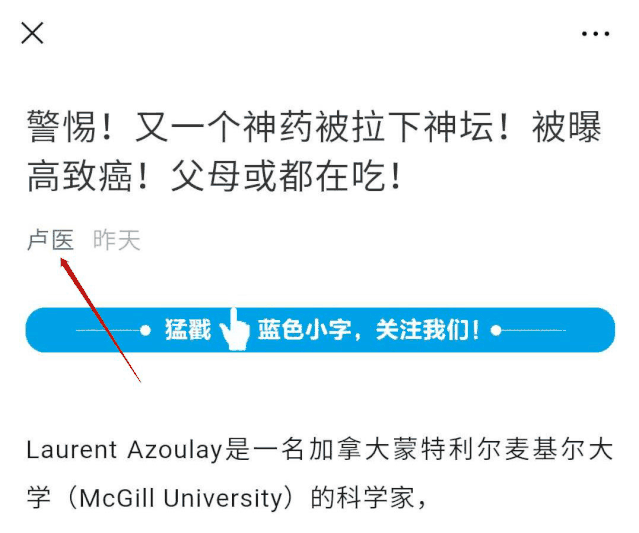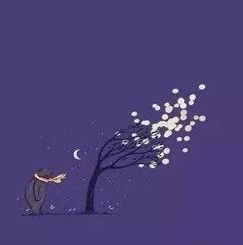Bai Shao (White Peony) is known for its floral beauty, and the affection between men and women is no longer solely adorned by roses, but also by the lingering fragrance of Bai Shao. Both the flower and its roots can be used medicinally; Bai Shao excels in nourishing blood and softening the liver, making it a great beauty product.
The Bai Shao flower is large and colorful, captivating to behold, yet it has always played a supporting role under the shadow of the peony, often referred to as the flower representative. In recent years, the significance of the Qixi Festival has grown among young people, and the line from the Book of Songs “When a man and a woman tease each other, he gifts her Bai Shao” has gradually been understood, indicating that the affection between men and women is no longer solely enhanced by roses, but also by the lingering scent of Bai Shao. In fact, Bai Shao is a very distinctive flower; among the myriad of flowers, it is one of the few with ‘medicine’ in its name, truly living up to its reputation as a remedy in the hands of healers. Bai Shao can nourish blood, soften the liver, benefit the stomach, and is widely used in treating chest and abdominal pain, dysentery, spontaneous sweating, night sweats, yin deficiency heat, irregular menstruation, metrorrhagia, and leukorrhea.

Bai Shao Grows Best in Hangzhou
Bai Shao is quite common and is cultivated across the country. The commonly used varieties include Bo Bai Shao from Bozhou, Anhui, and Hang Bai Shao from Pan’an, Zhejiang. Bai Shao is harvested in summer; the roots are cut at both ends, peeled, briefly boiled in hot water, then dried and sliced for medicinal use. It can be used raw, stir-fried with soil, or stir-fried with wine. Raw Bai Shao is used to nourish yin, soften the liver, replenish blood, and benefit the stomach; wine-fried Bai Shao is used to harmonize the middle and relieve urgency; soil-fried Bai Shao is used to calm the spleen and stop diarrhea.
The Compendium of Materia Medica states: “Bai Shao grows best in Hangzhou,” but with the passage of time, Bai Shao has become a commonly used cultivated medicinal material. Pan’an and Jinyun in Zhejiang have large-scale cultivation, especially in Pan’an, where the geographical environment is very suitable for Bai Shao growth, and it is planted throughout various towns, once becoming the main production area for Hang Bai Shao, with the quality of the harvest being the best in the country.
However, as mentioned in the Compendium of Chinese Materia Medica, although the quality of Hang Bai Shao from Pan’an is excellent, it is constantly impacted by Bo Bai Shao. The planting area of Bozhou Bai Shao is more than ten times that of Hang Bai Shao, and it has a shorter growth period. Therefore, although Hang Bai Shao is of high quality, it has no competitive advantage in the fierce price competition. According to the Compendium of Chinese Materia Medica, Chen Fengyang from Pan’an has been planting Bai Shao since he was 17 years old, and now in his seventies, he still insists on planting. He says that even if he incurs losses, he must plant it, as he wants to ensure that Hang Bai Shao, this “authentic medicinal material,” is passed down in his lifetime.

Protecting Bai Shao in Anhui
There is a widely circulated legend about Bai Shao in Bozhou, Anhui. It is said that during the Tang Dynasty, there was a young gardener who was fond of a wildflower with pink petals and golden stamens but did not know its name. He asked a private tutor to name it Bai Hua (Peony Flower). After Wu Zetian became emperor, she summoned the most famous gardeners in the land to plant flowers for her, and this gardener was among them, bringing along his beloved Bai Hua.
In the imperial palace, all the flowers flourished under careful care, but the Bai Hua longed for its homeland and gradually withered. The gardener, unable to bear the sight of his beloved flower wilting, tended to it daily. His efforts were rewarded, and the Bai Hua finally bloomed again, but the gardener fell ill from overwork. One night, he dreamt of a beautiful young woman emerging from the blooming Bai Hua, holding a silk handkerchief, who approached his bedside and said: “You have worried yourself to illness for me; I will twist off my root to cure you.” Saying this, she handed him the Bai Shao root wrapped in the handkerchief. When the gardener awoke, the woman had vanished, but the root remained. After brewing the root in water and drinking it, he recovered the next day. To express his gratitude to the fairy of Bai Hua, the gardener renamed it Bai Shao.
Later, the gardener, missing his hometown, returned to Bozhou, Anhui, with Bai Shao and had a son named “Bai Shao.” Since then, Bozhou has become the hometown of Bai Shao. I believe this touching story was likely created by well-meaning individuals in Anhui to promote Bozhou Bai Shao.

Bai Shao Excels in Nourishing Blood and Alleviating Pain
The Song Dynasty scholar Shen Zuozhe posed a question in his work Yujian: “People love to admire flowers and view Bai Shao; I want to ask, is there a difference in the roots between the red and white varieties, or is it a difference in species?” The answer was: “White Bai Shao receives the pure yang energy, thus it is white and good at replenishing; doctors use it to generate blood and alleviate pain; Red Bai Shao, receiving incomplete yang energy, is red and good at purging, its effects are not comparable, which is the natural principle.”
This question and answer affirm the primary functions of Bai Shao: nourishing blood and alleviating pain.
Bai Shao is bitter and sour, with a slightly cold nature. Its effects include nourishing blood and softening the liver, relieving urgency and alleviating pain, and it can be used for chest and flank pain, abdominal pain, and spasms of the hands and feet caused by liver qi stagnation. For treating flank pain, it is often used with Chai Hu (Bupleurum) and Zhi Ke (Bitter Orange); for abdominal pain and spasms of the hands and feet, it is commonly paired with Gan Cao (Licorice). Modern liver disease expert Guan Youbo has an empirical formula called Jian Pi Shu Gan Wan, which includes Bai Shao, Dang Shen (Codonopsis), Huai Shan Yao (Chinese Yam), Chao Yi Yi Ren (Job’s Tears), Chen Pi (Dried Tangerine Peel), Dang Gui (Angelica), Chai Hu, and Yu Jin (Turmeric), aimed at strengthening the spleen, opening the stomach, and soothing the liver to regulate qi, specifically treating the recovery phase of liver disease when liver function has returned to normal but digestive function has not fully recovered, presenting symptoms like chest and flank fullness, poor appetite, and fatigue. For chronic liver disease patients with hidden flank pain, one can take 6 grams of Bai Shao flowers and 50 grams of glutinous rice, boil them in water to make porridge for auxiliary treatment.

Replenishing Qi and Nourishing Blood for Beauty
When discussing blood nourishment, one must also mention beauty.
Blood is the foundation of health and beauty in the human body. Those with blood deficiency often have a yellow or pale complexion, dull lips, and lackluster nails, making it difficult to achieve a rosy and radiant appearance.
In TCM blood-nourishing formulas, Bai Shao is frequently used, such as in the well-known Si Wu Tang (Four Substance Decoction) from the Taiping Huimin Heji Ju Fang, where Bai Shao is combined with Shu Di Huang (Rehmannia), Dang Gui, and Chuan Xiong (Szechuan Lovage) to nourish blood and regulate menstruation. The physician Li Dongyuan noted regarding Bai Shao: “To nourish the liver is to regulate the blood,” hence the use of Bai Shao in Si Wu Tang. Individuals can also prepare at home 12 grams of Shu Di, 9 grams of Bai Shao, 6 grams of Dang Gui, and 6 grams of Chuan Xiong, adding 3 red dates, boiling in water for 1 hour, and using the water to brew rose tea for consumption, which aids in beauty and skin health.
The Ming Dynasty medical text Yixue Rumeng records a formula called San Bai Tang, which includes Bai Shao, Bai Zhu (White Atractylodes), Bai Fu Ling (White Poria), and Gan Cao, boiled in water and taken warm. This formula was originally used to treat febrile disorders and restlessness, but later it was discovered to replenish qi and nourish blood, whitening and moisturizing the skin, thus used for beauty and health. Bai Shao, being sweet and sour with a slightly cold nature, has blood-nourishing properties, and when used in combination with Bai Zhu and Fu Ling, it has a whitening effect. Beauty-conscious women can directly brew Bai Shao flowers as tea for treating facial blemishes.

Nourishing Yin and Benefiting the Stomach
Another classic formula featuring Bai Shao is Shao Yao Gan Cao Tang, which utilizes Bai Shao to nourish blood, astringe yin, soften the liver, and alleviate pain; Gan Cao supplements the middle, benefits qi, clears heat, detoxifies, and relieves urgency. Physicians have commented on this formula, stating that Bai Shao has a sour taste, receiving the purest wood energy; Gan Cao has a sweet taste, receiving the thickest earth energy. The combination of these two herbs has the unique ability to transform sour and sweet into yin, collectively achieving the effects of astringing yin, nourishing blood, and relieving urgency and pain. The physician Zhang Jiegugu once said: “Bai Shao and Zhi Gan Cao are indeed the divine medicines of Zhang Zhongjing. In summer, for abdominal pain, add Huang Qin; for heat-induced abdominal pain, add Huang Bai; for cold-induced abdominal pain, add Rou Gui.”
Another famous formula in the Shang Han Lun is Xiao Jian Zhong Tang, which also contains Bai Shao, serving as a warming and tonifying agent, relieving urgency and alleviating pain, as well as harmonizing yin and yang, softening the liver, and regulating the spleen. It is primarily used for middle jiao deficiency and cold, liver and spleen disharmony, abdominal cramping pain, preference for warmth and pressure, fatigue, and shortness of breath. It is now commonly used for gastric and duodenal ulcers, chronic hepatitis, chronic gastritis, neurasthenia, aplastic anemia, and functional fevers associated with middle jiao deficiency and liver-spleen disharmony. The Ben Zheng Lu records a formula called Jian Pi Yin, which includes Bai Shao, Huai Shan Yao, Tai Zi Shen, Chao Yi Yi Ren, Bian Dou, Mai Ya, Lian Zi, Shan Zha, Nei Jin, Ge Gen, and Da Zao, with a sweet and sour, gentle and moistening composition that nourishes the spleen and promotes upward movement, nourishes yin and harmonizes the blood, and is gentle in nature, making it suitable for treating spleen and stomach deficiency, abdominal distension, poor appetite, especially in children with digestive disorders, often used as the main formula with appropriate modifications, which children can accept happily and with good results.

Empress Dowager Cixi’s Preference for Bai Shao
In the Selected Medical Formulas of Empress Dowager Cixi, several medicinal pastes used in the imperial court included Bai Shao. In the 30th year of the Guangxu reign, Empress Dowager Cixi experienced dizziness and slight pain, and the imperial physicians Zhuang Shouhe and Yao Baosheng formulated a paste to clear heat, nourish the liver, and activate the collaterals, containing Xie Sheng Di, Hang Bai Shao, and Jiu Dang Gui, used to treat liver heat conditions, where Bai Shao was the main herb for nourishing liver yin and clearing liver heat.
Subsequently, Empress Dowager Cixi also took a paste primarily made of Bai Shao and Sang Ye (Mulberry Leaf) for clearing heat, nourishing the liver, and activating the collaterals, focusing on cooling the liver and activating the collaterals. On May 19 of a certain year in the Guangxu reign, Zhang Zhongyuan also prescribed a paste for regulating the liver and stomach, containing Dang Shen, Sheng Hang Bai Shao, and Jin Shi Hu (Dendrobium). This formula was commented on by Academician Chen Keji as: “Regulating the liver and stomach, heavily using Sheng Hang Shao, precisely addressing the symptoms of liver yin deficiency and spleen-stomach disharmony in Empress Dowager Cixi.” This highlights the experts’ affirmation of Bai Shao’s functions in nourishing the liver and stomach. Additionally, it is recorded that both Empress Dowager Cixi and Guangxu took pastes primarily made of Bai Shao for regulating the spleen and stomach.
If you want to see more content, remember to add our public account as a“starred” account:



Appreciation

Recommended Reading
Free collection! Teacher Ni Haixia explains the complete Huangdi Neijing—75 episodes
Collection! Humorous explanations of the four great classics of TCM Shang Han Lun (HD complete series)
The most reliable health knowledge! Be sure to collect Teacher Xu Wenbing’s dietary health tips!
Can’t find a good TCM practitioner? Why not learn TCM yourself! Free video learning of the complete Shang Han Lun 70 episodes!
Collection! Here are the complete video lectures of Ni Haixia’s TCM Acupuncture, worth learning!
Disclaimer This article is sourced from the internet, and the copyright belongs to the original author. Please indicate the source when reprinting. Sharing this article is for the purpose of dissemination and learning exchange, and does not bear responsibility for the views expressed in the article. If there are copyright issues, please contact for deletion. The various prescriptions and remedies mentioned in the article are for reference and learning only; non-professionals should not use them blindly! The advertisements in the article are generated automatically by the system and are unrelated to this account.
For more sharing/exchange/cooperation, please contact WeChat: Doctor Lu
WeChat ID:luyi520323
Email:2870679002@qq.com

Long press the QR code to recognize and follow, updated daily
Click 【Looking】 to spread health and share knowledge~~~


